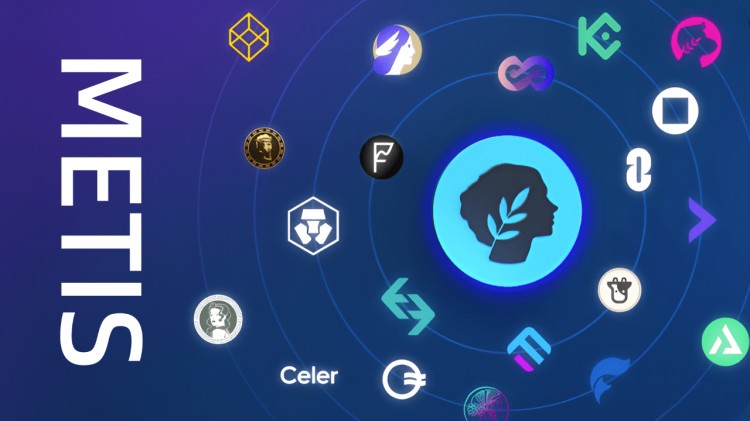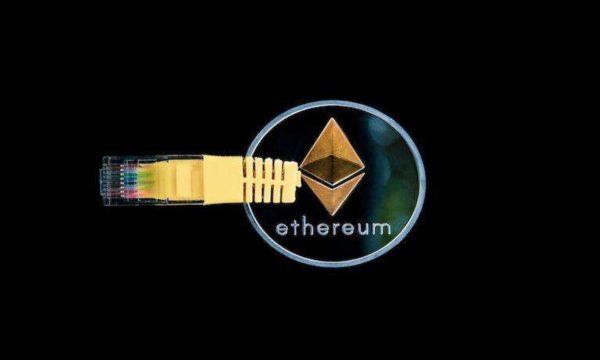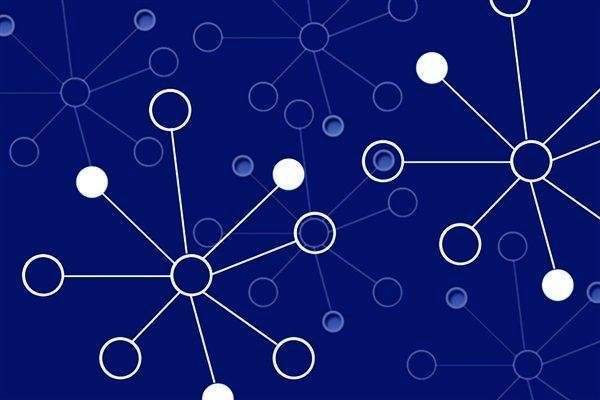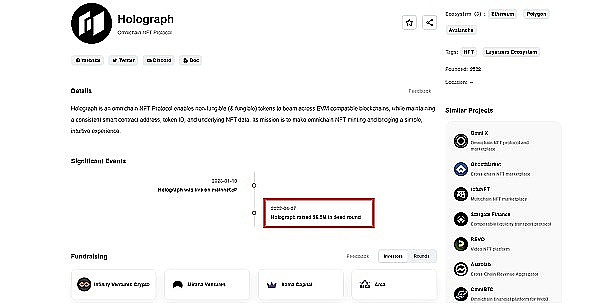时间:2024-03-26|浏览:286
Native is positioned as the liquidity layer of the blockchain and includes three products: Native, a liquidity interface that can be integrated by projects, NativeX, a transaction and cross-chain aggregator, and Aqua, a new lending tool. NativeX integrates multiple decentralized exchanges and cross-chain bridges as liquidity sources, and cooperates with some private market makers on this basis to provide users with zero slippage and a convenient trading experience. Its core product, Aqua, allows market makers to borrow funds from deposit users to make markets, solving the problem of market makers' lack of liquidity. Because market makers use Aqua liquidity for settlement during settlement, funds are always stored in Aqua contracts, and the risk is significantly lower than traditional institutional lending. Aqua controls risks while also increasing the efficiency of fund utilization and profitability.
Project Overview
Native is positioned as a programmable liquidity layer. It currently has three products: Native, a protocol-oriented liquidity interface, NativeX, a cross-chain transaction aggregation, and Aqua, a new lending tool for market makers. Native can help project parties directly access Native liquidity on their own web pages. NativeX is already at the forefront of the cross-chain aggregation trading track. Although the overall demand for the track is low, it reflects the team's operational capabilities to a certain extent. The design of its new lending product Aqua greatly improves the capital efficiency of market makers while controlling risks, and is highly innovative. Native has received two rounds of funding from Nomad Capital and is launching its core product, Aqua.
Native can help project parties launch trading functions on their own websites, giving protocol users a more convenient interactive experience. By using Native's tools, protocols can easily access Native's liquidity on their own websites and change transaction fees by themselves.
Although cross-chain transaction aggregation products are currently less adopted, they have certain growth potential. Users have great demand for cross-chain bridges and transaction aggregation, but they often operate them separately, and there are fewer users who directly use cross-chain transaction aggregation. Although cross-chain transaction aggregation can provide a convenient transaction experience, it has not been widely adopted due to issues such as liquidity and user habits. NativeX is already at the forefront in the field of cross-chain aggregation. It has integrated more liquidity and accumulated more market maker resources. It can receive more than 70% of DeFi's order flow, which will help the subsequent launch of Aqua. And with the outbreak of major L1 and L2, the demand for cross-chain transactions increases, and cross-chain transaction aggregation may gain more user adoption.
As a new lending tool, Aqua improves the capital efficiency of market makers while reducing user capital risks as much as possible. Credit lending agreements for institutions often do not require collateral. Institutions can directly lend user funds after being reviewed. Information disclosure such as the use and whereabouts of funds after lending is basically zero, and users need to bear greater risks of institutional default. The market makers that borrow from Aqua are all over-collateralized and do not actually lend out the funds. The market makers only use the funds in the Aqua pool for transaction settlement, and there are two-way transactions between users and the Aqua pool before and after settlement. Then the market maker generates corresponding long positions and short positions in the Aqua pool, and the market maker can simultaneously perform reverse operations on the centralized exchange to earn the transaction price difference. For deposit users, the funds used for mortgage by market makers are always stored in the Aqua pool, the risk of default is minimized, and users can obtain sustainable low-risk returns. For institutions, they gain liquidity on the asset-free blockchain and can open more positions, maximizing capital efficiency.
As joint products, Native, NativeX and Aqua can provide each other with pricing, order flow and liquidity, forming a linked competitive advantage.
Overall, Native has accumulated a lot of resources in cross-chain transaction aggregation, which will help the further development of its new product Aqua. And form the effect of the linkage between Native, NativeX and Aqua. As a new product of Native, Aqua creates a new paradigm for cooperation between liquidity providers and market makers. While ensuring the safety of deposit users' funds, it also provides market makers with higher capital efficiency and convenience, forming a win-win situation. As a rare innovation in the DeFi field, there is currently no similar product, and Native deserves attention.
1. Basic overview
1.1. Project Introduction
Native is positioned as a programmable liquidity layer. It currently has a protocol-oriented liquidity interface Native and a cross-chain transaction aggregation product NativeX to provide trading users with a more convenient trading experience. Native has launched Aqua, a new lending protocol for users and market makers, on the test network. Aqua enables market makers to obtain borrowing capacity through mortgages and settle users' transactions through funds from the Aqua pool, which increases capital efficiency while minimizing the market maker's default risk.
1.2. Basic information

2. Project details
2.1. Team
According to Linkedin data, team members are 3–10 people. The core members are introduced as follows:

Meina Zhou, CEO of Native. He has a master's degree in data science from New York University, has more than 8 years of experience in leading data science teams, and has extensive experience in machine learning, data mining and project management. Meina Zhou is also the founder and host of the CryptoMeina Podcast.

Wee Howe Ang, a consultant at Native, holds a bachelor's degree in electrical engineering from the National University of Singapore. Served as Software Development Manager (Assistant Vice President) at Deutsche Bank. CTO of cryptocurrency trading company Altonomy, CTO of cryptocurrency trading company Tokka Labs.

Hung, Native’s technical lead. Entered the encryption industry in March 2019, is a full-stack engineer, and is familiar with EVM smart contracts.
The number of Native members is small, but the team has a clear division of labor and has rich industry experience in the fields of technology, trading and publicity operations.
2.2. Funding
In April 2023, Nomad led a $2 million seed round. Nomad Capital received investment from Binance in March 2023 and invested in its first project, Native, the following month. In December 2023, Native received strategic investment from Nomad Capital.

2.3. Products
2.3.1. Aqua
In the early days, decentralized exchanges mostly used order books and RFQ (requesting quotes directly from market makers instead of placing orders, which is slightly different from order books) trading types. However, the cost of order book transactions on the Ethereum network is too high, the transaction depth is poor, and matching is difficult. Therefore, the automatic market maker mechanism has become the mainstream model of decentralized exchanges. Take Uniswap as an example. Uniswap adopts a constant product market making model. Although it achieves self-discovery of prices, its capital efficiency is low and a large amount of liquidity is required to reduce the price impact of transactions, and liquidity providers still face free losses. The risks and benefits of providing liquidity are often not as high as simply holding tokens.
Native is launching Aqua, a new paradigm of trading model. Aqua is a new lending product for ordinary users and market makers, which combines the attributes of decentralized exchanges and lending products. It is committed to increasing the capital efficiency of market makers and users' deposit income while ensuring the safety of user funds. Usually, market makers' funds are stored in centralized exchanges and individual blockchains. If there is a certain demand for market making on a new blockchain, they need to allocate part of the funds and bear the security risks of this blockchain. Market makers may give up part of their market-making profits as a result.
Through Aqua, market makers use asset mortgages to borrow money to make markets in the new blockchain network (the collateral can exist on other chains). Generally, the RFQ mechanism is used, which has high capital efficiency but does not suffer from slippage, MEV and other disadvantages. Its funds come from deposit users/liquidity providers (deposit users can also obtain certain borrowing capabilities). Assume that the user sells ETH for USDT, and the market maker gives a quotation and settles it through Aqua's funds (deposited by the user). After settlement, the market maker generates a short position in USDT and a long position in ETH (equivalent to the market maker's The pool has lent USDT and deposited ETH, but the funds are in the Aqua contract). Within the scope of its borrowing, a market maker can maintain multiple positions simultaneously, maximizing the market maker's liquidity and capital efficiency.
Aqua not only improves the capital efficiency of market makers, but also solves the problem of market makers' lack of liquidity on some blockchains. The bigger highlight is that the money borrowed by the market maker has always been in Aqua's contract, and the actual manifestations are long positions and short positions. The asset sheet of the market maker is more transparent and the borrowed assets cannot be misappropriated. The risk is significantly lower than that of traditional institutions. Lending Agreement.
For lending users, the income is superimposed on the traditional lending agreement with the interest on funds used by the market maker (the interest fee for opening a position). The deposited funds have more lending scenarios, and the yield is higher than the traditional lending agreement. High, but does not face the credit risk of the market maker (the funds are always stored in the Aqua contract). And market makers have a continuous need for transaction settlement, that is, the income of deposit users is relatively stable and sustainable.

Aqua market makers are all over-collateralized, and the collateral and settlement funds do not need to exist in the same blockchain. Aqua uses a fixed-rate lending model that adjusts based on market conditions and capital utilization. Interest will be calculated through off-chain calculations (the specific interest amount is determined based on the number of blocks passed and position changes), and the calculated interest amount will be sent to the chain periodically. Aqua uses off-chain quotes. When a market maker's borrowing exceeds its borrowing limit, whitelisted liquidators can propose a liquidation proposal. Aqua will verify the proposal and return a signature, and the liquidator will then perform liquidation on the chain.
2.3.2. Native & NativeX
Since the GAS issue of Ethereum was criticized, the encryption market is gradually moving towards multi-chain. From the perspective of TVL, the TVL ratio of the Ethereum network has remained around 58% in the past two years, which shows that other blockchains have certain market competitiveness and maintain a certain degree of liquidity. From the perspective of public chain narrative, Ethereum will serve the second-layer network as its core, and more of its funds will migrate to the second-layer network in the future. It can be expected that the future encryption market will be a multi-chain parallel rather than a simple Ethereum one-size-fits-all situation.
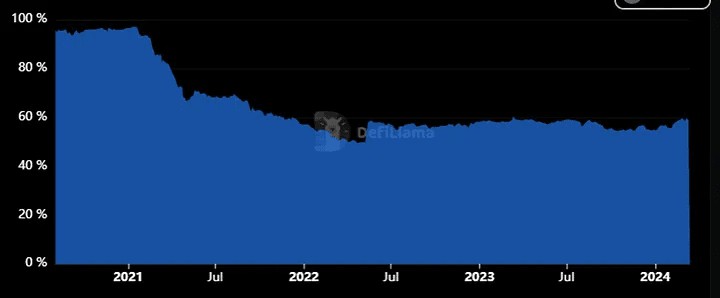
As more and more blockchains are launched, liquidity becomes fragmented. Whether it is the first-layer blockchain of Solana and Aptos or the second-layer network of Ethereum, there is a huge demand for liquidity.
For traders, the current price order book trading model and deep liquidity of centralized exchanges can reduce transaction costs, but it also means that users need to give up ownership of assets and cannot trade unlisted tokens. Although asset ownership can be retained on decentralized exchanges, it is limited to on-chain liquidity, and traders have to bear slippage, price impact, and MEV losses.
Native is a liquidity solution that integrates multi-chain liquidity sources. Its product Native can help project parties access Native’s liquidity and launch trading functions on their own websites. Another product, NativeX, has both cross-chain bridge and transaction aggregation functions, allowing users to conduct cross-chain transactions. As of March 18, 2024, NativeX supports 10 EVM-compatible chains such as Ethereum, Arbitrum, Polygon, BNB Chain and Base, and continues to add more blockchains.

On the basis of aggregating the liquidity of multiple DEXs (including aggregators) and cross-chain bridges, NativeX cooperates with multiple private market makers (Private Market Makers) to give traders better quotes. Private market makers are different from traditional automatic market makers. Private market makers are independent individuals that provide a request for quotation (Request for Quotation) mechanism similar to centralized exchange limit orders, and use their own algorithms to and pricing models to provide liquidity to its partners, such as trading aggregators. The RFQ mechanism has higher flexibility than the automatic market maker mechanism, and has greatly improved financial efficiency.
When a user sends an order request, Native will obtain quotations from multiple decentralized exchanges. At the same time, Native will also obtain quotations from private market makers, and the private market makers will reply with encrypted signature quotations (which can avoid front-running, price impact and slippage loss). Native provides traders with the optimal price strategy after aggregating quotations. If the order is placed with a private market maker, Native will finally verify the trader's digital signature. When the trading conditions are met, the trader and the market maker perform atomic swaps. Otherwise, the order will be automatically canceled to ensure the safety of the funds of both parties.
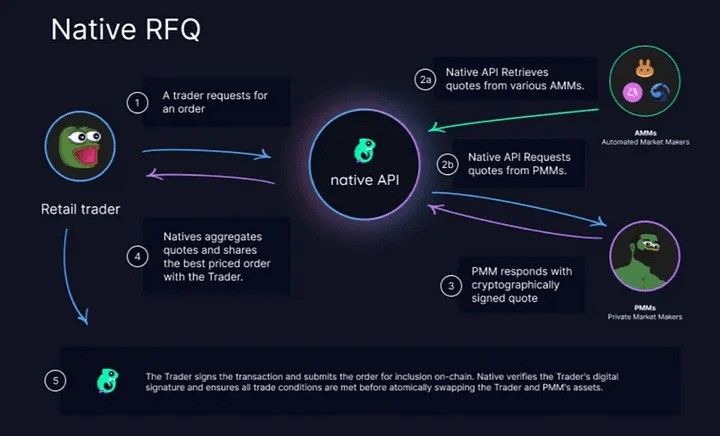
There are no losses such as transaction fees and price impact when users place orders with private market makers. That is to say, Native reduces users' transaction costs to a certain extent on the basis of retaining ownership of user assets.
NativeX is aimed at traders. For project parties, it can connect to Native liquidity sources through the built-in Native program. By adding trading functions, project parties can choose to charge transaction fees (default 0%) and pay liquidity providers. Give additional token rewards. Currently, BendDAO, Aboard, Range Protocol and Velo have built-in Native to achieve a more convenient trading experience, and ZetaSwap is built directly using Native.
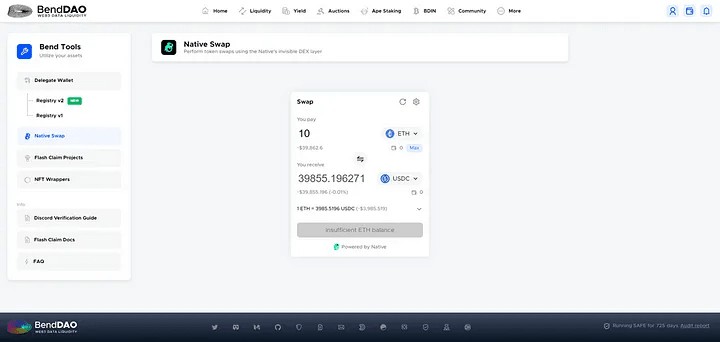
For market makers, accessing Native's liquidity can obtain more order flows, and aggregators accessing Native can also obtain more quotation sources, which is conducive to further optimization of prices.
Summary: The consultants of the Native team are executives of two cryptocurrency trading companies and have more market making experience. The products of the agreement include NativeX and Aqua. NativeX is similar to a cross-chain bridge and transaction aggregator, helping users conduct more convenient transactions. As a new product of the team, Aqua creates a new paradigm for cooperation between liquidity providers and market makers. It can solve the problem of market makers' lack of liquidity on some blockchains and improve the capital efficiency of market makers, while depositing users There are more demand sides for funds, which not only improves users’ deposit income, but also protects users’ fund security as much as possible.
3. Development
3.1. History
Table 3–1 Native events
Judging from the historical process of Native, product delivery and new support network speeds are relatively fast, and it has gained certain market demand in a relatively short period of time.
3.2. Current situation
Since its launch in April 2023, Native has accumulated a trading volume of US$2.45 billion, with a total number of transactions of 3 million, and the assets of the private market makers it cooperates with exceed US$100 million.
The main transaction volume of the protocol comes from Ethereum, Avalanche and BNB Chain, mainly the WAVAX, USDT and ETH tokens on them. Assuming that traders consider slippage and other factors, Native's main competitiveness is the above-mentioned trading pairs. The private market makers that Native cooperates with mainly provide liquidity for Ethereum and BNB Chain's mETH, AVAX and BTC tokens.
3.3. The future
Native is completing the final testing of Aqua (including the audit of on-chain contracts and the execution of off-chain structures). In the future, Native will deploy Aqua and launch it on the main network, and will gradually support the RFQ of perpetual contracts and the on-chain credit of zero-knowledge proofs. mechanism.
Summary: The overall delivery speed of the Native team's products is relatively fast and it has gained a certain market share. The team is launching its lending product Aqua for market makers, and will later integrate it into the perpetual contract field and launch an on-chain zero-knowledge proof-type credit mechanism. As the team’s subsequent flagship product, Aqua’s performance and data after its launch are critical to Native.
4. Economic Model
Native has not issued currency yet and has not yet announced its economic model.
5. Competition
5.1. Industry Overview
Native currently has two products, NativeX, a cross-chain transaction aggregation, and Aqua, a lending protocol for market makers. Cross-chain transaction aggregation has always been a niche field, and lending agreements for institutions often give KYC institutions the right to borrow without collateral. After institutions lend funds, the information is not transparent, and there are no restrictions on the use of funds, making it difficult to ensure the safety of user funds.
Users have always had a greater demand for transaction aggregation. Taking March 18, 2024 as an example, the transaction volume achieved through aggregators accounted for 36.7% of the total DEX transaction volume. Although transaction aggregation has always had a huge user group and demand, its segmented cross-chain transaction aggregation has been difficult to win the market. Among the top ten aggregators by transaction volume, only the tenth-ranked Jumper Exchange (a product of LI.FI) is a cross-chain transaction aggregator. Overall, cross-chain transaction aggregation is still a niche track, and users are more familiar with it. Well-known aggregators such as 1inch, Jupiter and CowSwap.
Lending agreements for institutions often do not require full mortgages. Cooperating institutions can directly lend unsecured loans to each other. The transparency of the whereabouts and retention of funds in the agreement is extremely low. Users do not even know the amount of funds lent and the lender. Depositors face greater risks of institutional default and lower capital security. Take the RWA track Goldfinch as an example. It experienced two safety issues from September to October 2023. Goldfinch is already a prudent borrowing agreement at the track, but there are still many insufficient borrowing information and disclosures. It can be seen that the lending agreement for institutions seriously lacks transparency and there is a large risk of institutional default. Therefore, the TVL of the track has always been at a low level.
5.2. Competitive analysis
5.2.1 Aqua
The product logic of Native's new product Aqua is highly innovative. Aqua contains the characteristics of both a decentralized exchange and a lending protocol, which creates a new cooperation paradigm for market makers and liquidity providers. The funds deposited by the liquidity provider will be stored in the Aqua contract. After being over-collateralized, the market maker can use the funds in the Aqua pool to make markets. When the market maker conducts a transaction, the market maker uses Aqua The funds in the pool are settled. It is equivalent to having a long position and a short position in the pool (rather than lending funds to the contract for market making operations). The market maker can simultaneously perform reverse operations on the centralized exchange to earn the transaction price difference.
The main lending scenarios of traditional lending protocols such as Compound and AAVE are for users to increase their own leverage, short selling and interest rate arbitrage. This requires sufficient market fluctuations and other factors to create lending demand, such as the increase in stablecoin interest rates caused by market rebound and Ethereum. Pledge income increases ETH deposit income, etc. Compared with Compound, users' funds deposited in Aqua have more loan needs and higher yields. Moreover, the interest rates of lending agreements are often affected by market conditions, and the demand of market makers is more stable. That is, users’ income is relatively more stable and sustainable. From the beginning to the end, the user's funds have always existed in Aqua's contracts, and the market makers are over-collateralized and the positions are transparent. Compared with transferring funds directly to market makers or institutions, the Aqua lending model is significantly safer. Increase.
For market makers, market makers can open more positions at the same time through Aqua settlement, which maximizes the capital efficiency of market makers compared to directly lending funds. Moreover, liquidity on multiple blockchains can be obtained through mortgage, which greatly enriches the market-making scenarios of market makers. It is currently an innovative product of DeFi. Private market makers use the liquidity deposited by users, and through the RFQ mechanism, can provide stronger quotations than automatic market makers in terms of unit liquidity, which may subvert the current situation in which the automatic market maker mechanism of decentralized exchanges dominates. .
5.2.2 Native & NativeX
In cross-chain transaction aggregation, NativeX's 24-hour transaction volume of 3.5 million US dollars is already at the forefront of this track (the overall aggregator ranks 12th), and its transaction volume is second only to Jumper Exchange in this track. Jumper Exchange was built by LI.FI. The LI.FI team raised US$5.5 million in July 2022 and US$17.5 million in March 2023. The seed round was led by 1kx, which is currently the strongest player on the track. As a new fund invested by Binance, Nomad also has a good reputation in the DeFi field, and Native is already at the top level in terms of financing background.
The product logic of cross-chain transaction aggregation is relatively simple. The protocol aggregates more liquidity sources from cross-chain bridges and decentralized exchanges, and on this basis it cooperates with certain private market makers to provide more liquidity sources. , and finally cross-chain transactions aggregate comprehensive quotes and select the optimal solution for traders, providing a more convenient and efficient trading experience. Similar to NativeX, LI.FI's promotion method is mainly to integrate with websites of other protocols. LI.FI has launched pre-built user interface component tools. Projects can integrate Jumper Exchange's exchange services into their own websites and implement One-stop cross-chain transaction aggregation service.
Since going online in April 2023, as of March 19, 2024, Native has aggregated 3 million transactions and a transaction volume of US$2.45 billion, and LI.FI has currently aggregated 5 million transactions and a transaction volume of US$4 billion. . Native went online late, and its current total transaction data is about 60% of LI.FI, and its daily trading volume of US$3.5 million is about 53% of LI.FI.
Currently, NativeX supports 10 EVM chains. Although the number is less than LI.FI, NativeX already supports most important EVM networks and is rapidly expanding to other networks. From the data point of view, NativeX is already at the top level in cross-chain transaction aggregation.
Summary: Native’s product NativeX is already at the top level in the cross-chain transaction aggregation track and has high market competitiveness. However, in general, cross-chain transaction aggregation is still a niche track and the overall demand is small. Its new product Aqua has many innovations. It uses a unified pool to manage funds, and market makers use the Aqua pool liquidity to settle transactions. It not only greatly increases the capital efficiency of market makers and helps market makers obtain liquidity on more blockchains, but also ensures the safety of users' funds as much as possible.
6. Risks
1) Code risk
Native's code is audited by Salus, Veridise and Halborn, and its immune bounty program will be launched soon, but there are still code risks.
2) Untimely liquidation
Aqua's liquidation is carried out regularly by whitelist liquidators. If the market maker has obvious token exposure and encounters extreme market conditions, the market maker may not liquidate in a timely manner, causing the liquidity provider to suffer losses.
[1] https://defillama.com/chains
[2] https://www.benddao.xyz/en/bend-tools/native-swap/
[3] https://native.org/
References
https://docs.native.org/native-dev/, Native project documentation
https://medium.com/@native_labs,Native Medium
— Investment Risks and Disclaimers —
The above content analysis only provides reference information and does not serve as a basis for investment decisions. Please do not make any investment decisions based on this report. First Class Warehouse and the author of the report are not responsible for the user's investment results.
The report has been prepared as of the date indicated and, as subsequent market or economic conditions may change, the contents may not necessarily reflect those changes. Graphs, charts and other visual aids are provided for reference purposes only. None of these graphs, charts or visual aids are intended to be used in making investment decisions. No representation is made that First.VIP will assist anyone in making an investment decision, and no graph, chart or other visual aid can capture all factors and variables necessary to make such a decision.
Certain statements involved in this article may be First.VIP’s assumptions about future expectations and other forward-looking views, and known and unknown risks and uncertainties may lead to actual results, performance or events. material differences from the views and assumptions expressed in the statements.
Any projections, forecasts and estimates contained in this report are speculative in nature and are based on certain assumptions. These forward-looking statements may prove to be incorrect and may be affected by incorrect assumptions or known or unknown risks, uncertainties and other factors, most of which are beyond our control. It is anticipated that some or all such forward-looking assumptions will not materialize or will differ materially from actual results.
热点: LAYER

用戶喜愛的交易所

已有账号登陆后会弹出下载




![[马尔科姆]Layer 2 区块链乐观主义引发显着增长 Ripple XRP Whales Eye](/img/btc/93.jpeg)

